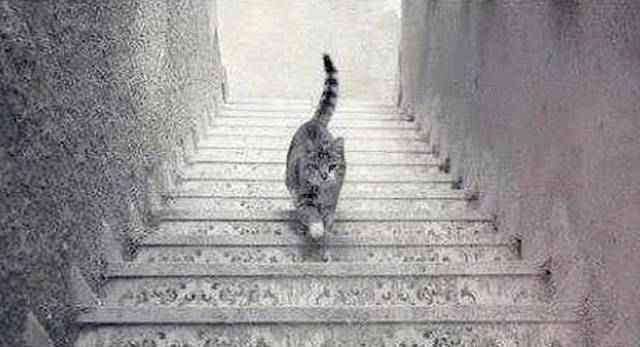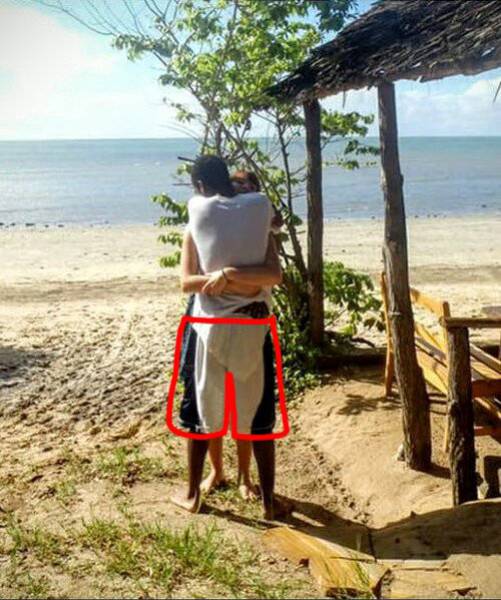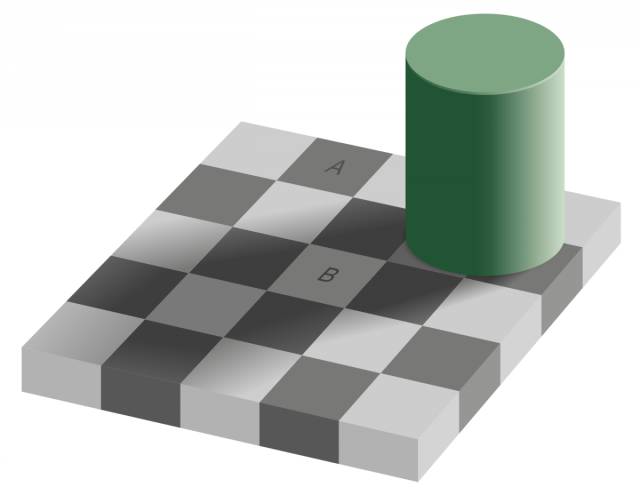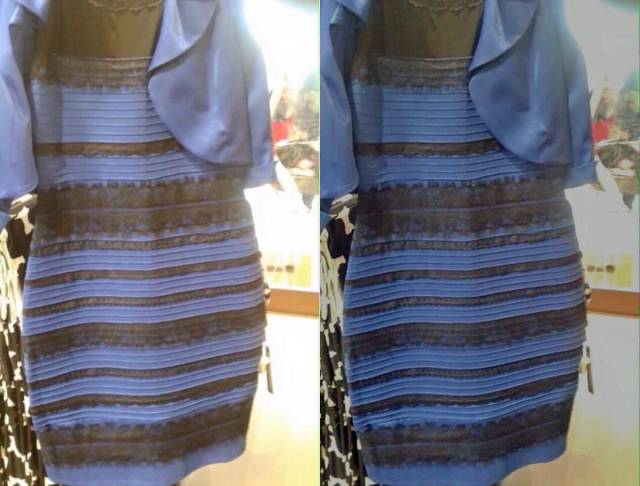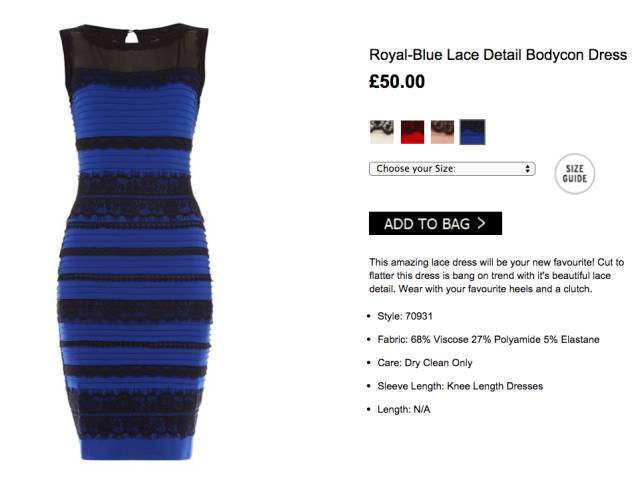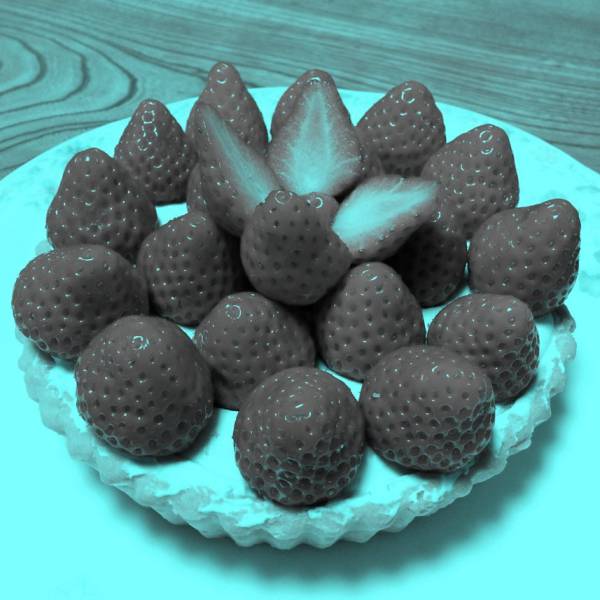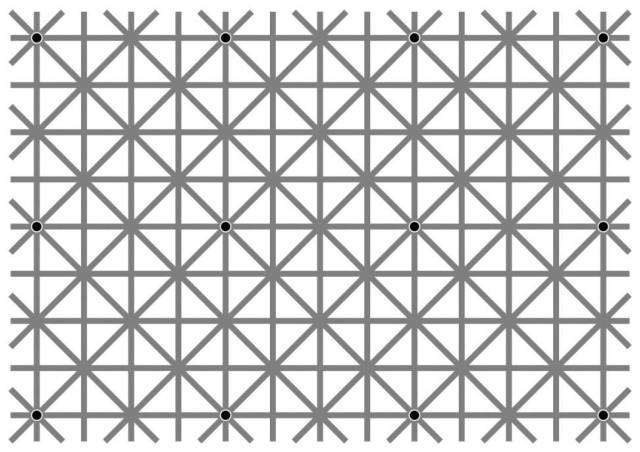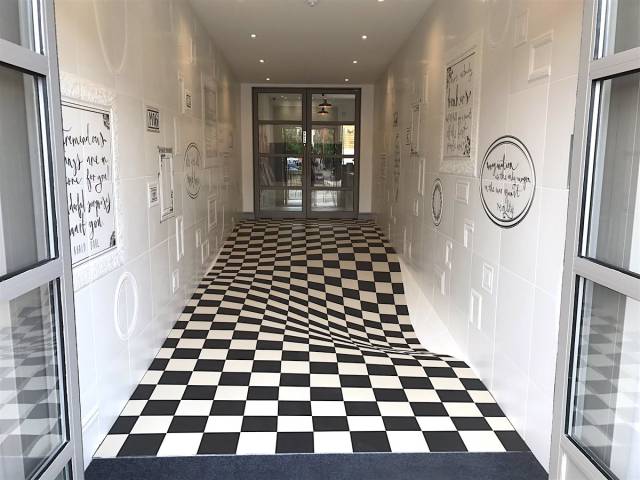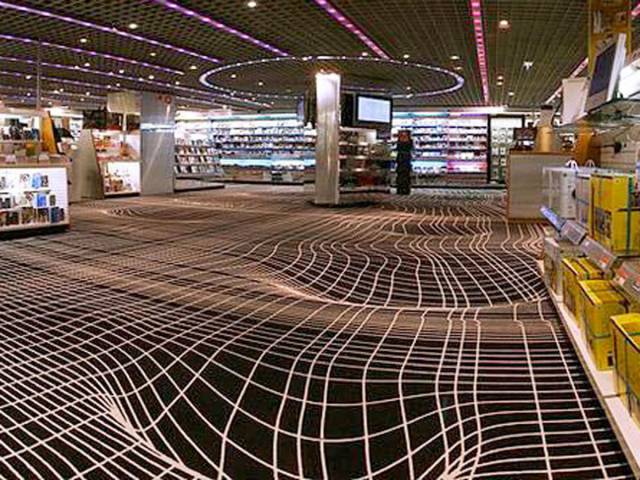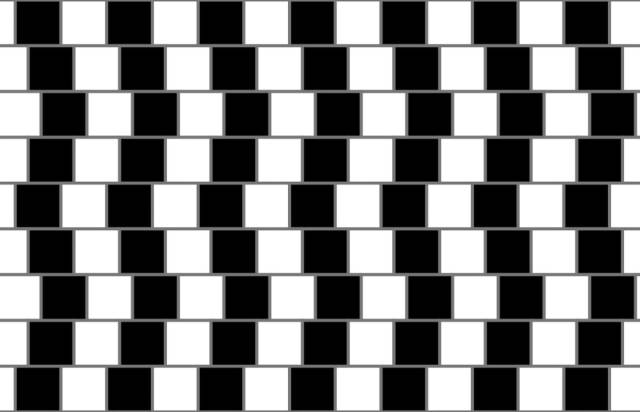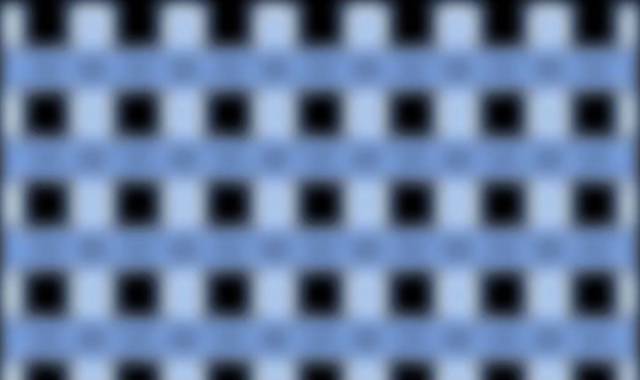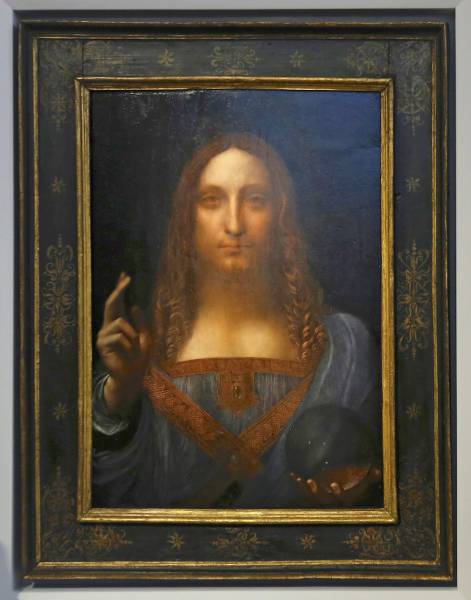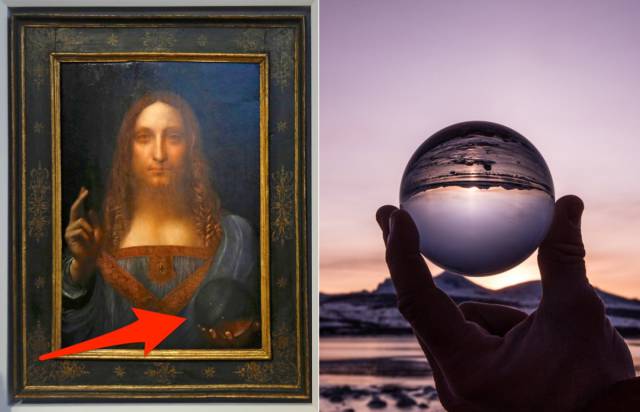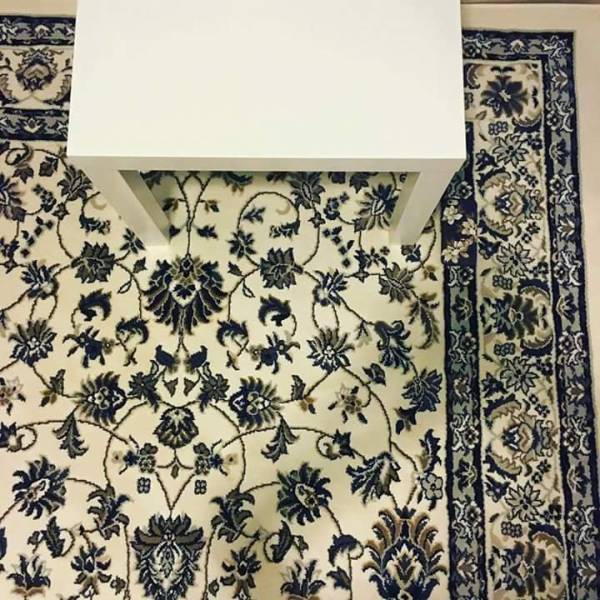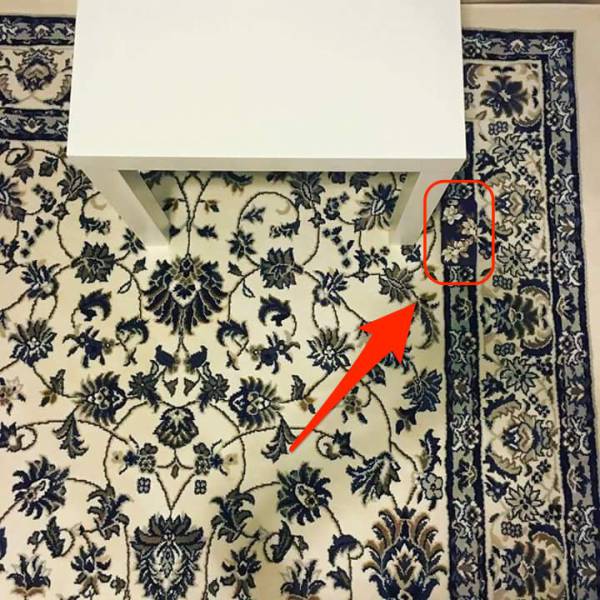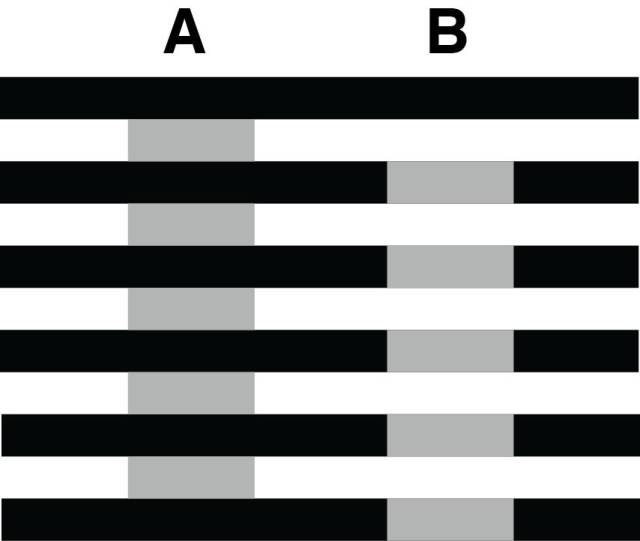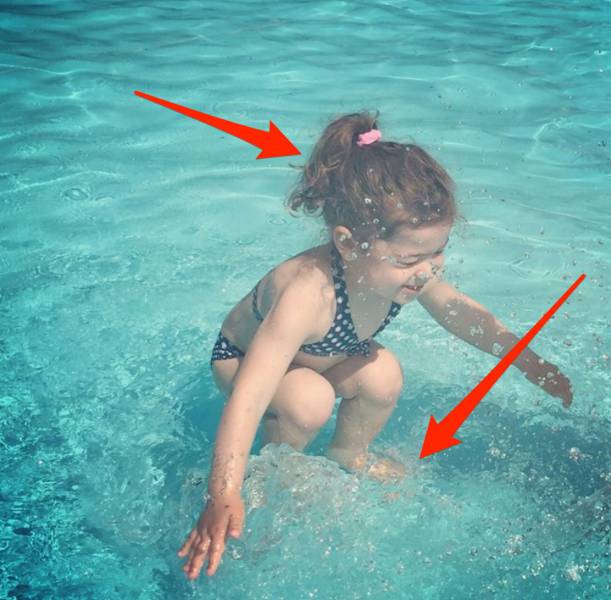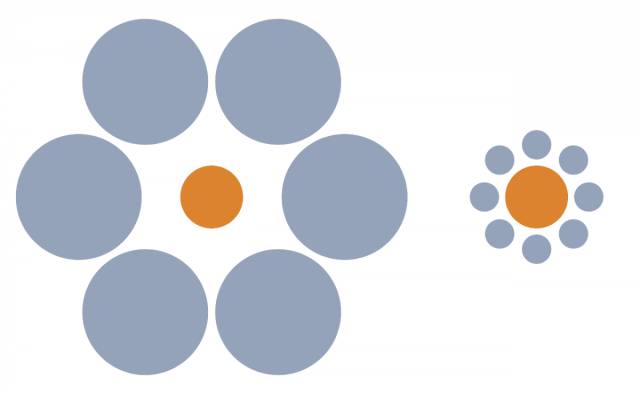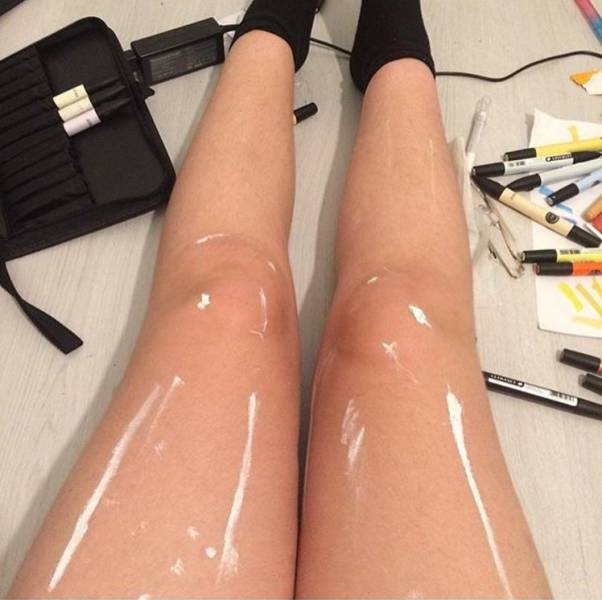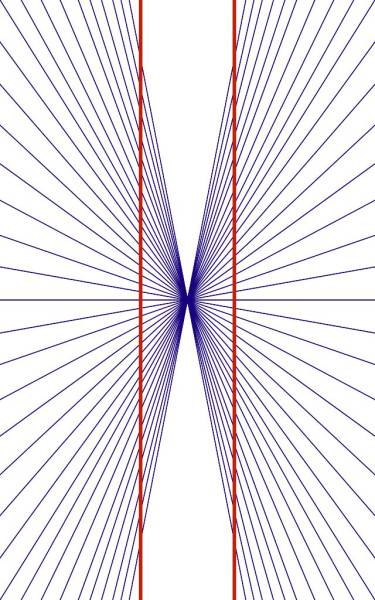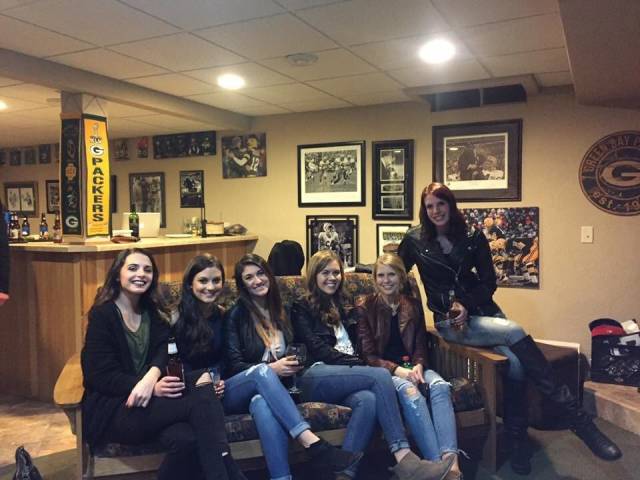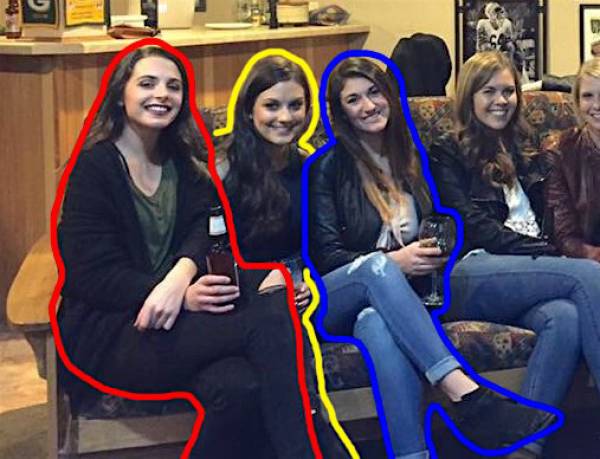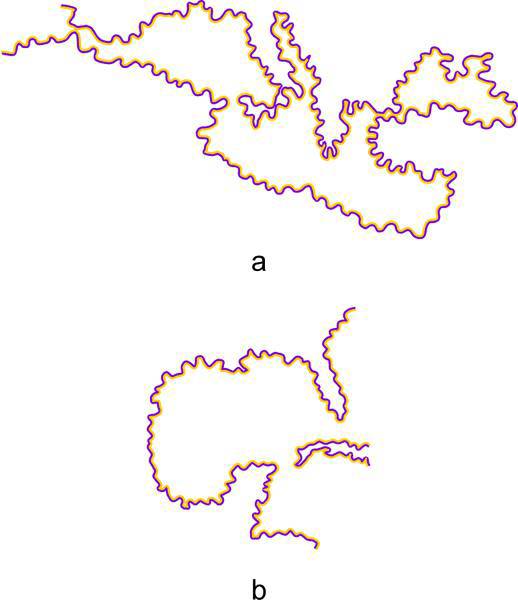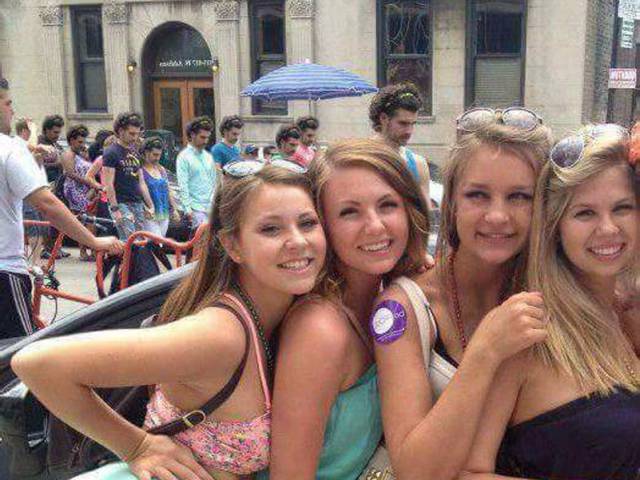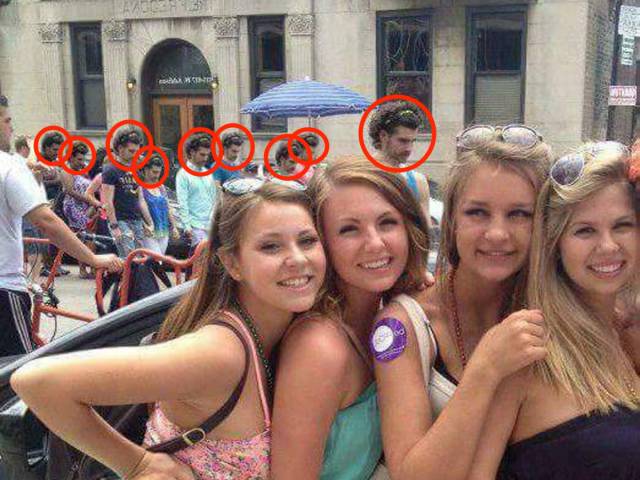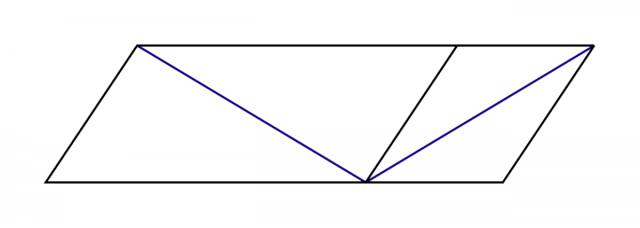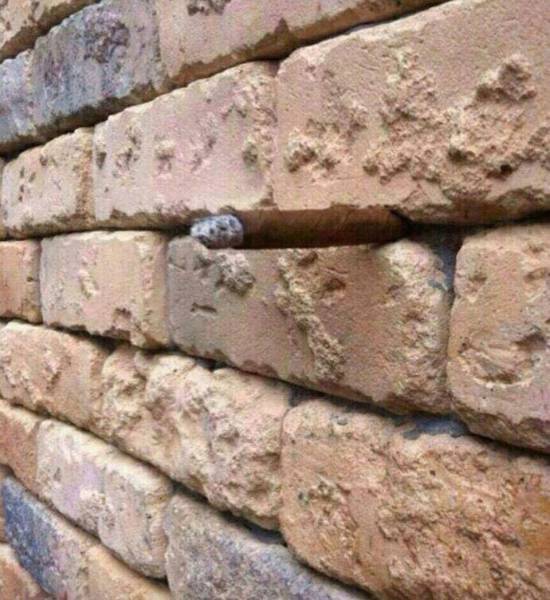Although you may see a bunch of swirling circles, this image is actually completely still.
The image above was inspired by the famous illusion "Rotating Snakes," created by Japanese psychologist and professor Akiyoshi Kitaoka in 2003.
Both are examples of a peripheral drift illusion, in which we perceive still images as moving ones. Interestingly enough, when you stare at one part of the photo without moving or blinking your eyes, that part stops "swirling" (while the circles in your peripheral vision continue to "move").
Is this cat going up or down the stairs?
This innocent photo of a cat went viral back in 2015 as people wondered whether the animal was going up or down the flight of stairs.
Internet users used everything from architecture to biology to defend their answers to the hotly debated question. INSIDER's Megan Willett, for example, broke down why the cat is "definitely" going down the stairs — and after reading her explanation on Business Insider, I'm convinced.
This photo of two people hugging confused the internet last year.
The post went viral after Reddit user Blood_Reaper shared it online, along with the caption, "This hurts my brain...."
People couldn't figure out who was initiating the hug, as the man in the photo appears to have two pairs of legs.
If you focus on the man's shorts, you'll figure it out.
The man's shorts are black on the side and white in the middle, making them appear like they're white pants that the woman is wearing.
Tiles A and B on this checkerboard are the exact same color.
This classic optical illusion was first published in 1995 by Edward H. Adelson, a professor of vision science at MIT.
Called the "checker shadow illusion," the effect has to do with the way our brains interpret color and shadow.
As Slate explained, "your brain is always comparing things." Square A is surrounded by lighter squares, making it appear darker, while Square B is surrounded by darker squares, making it look lighter. The shadow also "messes with your perception" and "amplifies the effect," Slate added.
If you're still not convinced, open the image in Photoshop, use the Dropper or Color Picker tool to select the color in Square A, and draw a straight line to Square B (or vice versa).
Is this shoe pink and white or teal and gray?
Earlier this month, this humble shoe went viral after people started debating whether it was pink and white or gray and teal. It felt like the second coming of The Dress debate from 2015, in which the internet could not agree on the true color of a bodycon dress.
The shoe is actually pink and white in real life.
Just like the photo of The Dress, the original photo of the sneaker was taken in poor lighting with a bluish tint, INSIDER's Susanna Heller explained. Your perception of the shoe's color depends on your individual sensitivity to the lighting in the image.
Keep reading to learn more about this phenomenon.
Is this dress blue and black or white and gold?
In 2015, the debate over the true color of this dress spawned hundreds of online comments, articles, and even peer-reviewed scientific analyses. People either saw it as black and blue or white and gold — and both sides were convinced that they were right.
As you probably know by now, the dress turned out to be black and blue.
There are countless explanations you can read online about why people see the dress as two completely different colors.
In simplest terms, it all has to do with how your brain processes color. Basically, light bounces off objects in the world and reaches your eyes in "a mix of wavelengths," which your brain then interprets as color.
As Slate's Pascal Wallisch explained, "this mix depends on two things: the color of the object and the color of the light source. [...] To achieve what color vision scientists call 'color constancy,' the brain calculates color-corrections for an image on the fly. It takes note of the illuminating light and tries to figure out how it might be affecting the color of an object."
Since the photo of the dress was taken in poor lighting with a bluish tint, your brain either sees the dress in shadows (and color-corrects the dress to be white and gold) or in "a fair amount of illumination" (and perceives the dress as blue and black).
Here's another example of color constancy: these strawberries aren't red.
Like "Rotating Snakes," this illusion was also created by Japanese psychologist and professor Akiyoshi Kitaoka, who studies visual perception at Ritsumeikan University. Professor Kitaoka shared the photo on Twitter earlier this year.
The color red has been completely removed from the image, yet people still see red strawberries. Why?
Well, as INSIDER's Jacob Shamsian explained, the brain "knows that the color of an object is more useful than the color of a light source" in determining the color of an object. Thus, "it's trained to ignore information" it receives about the color of a light source. Since your mind recognizes that the objects in this photo are strawberries, and it knows that strawberries tend to be red, it color-corrects the gray and green pixels in the image to be red.
There are a total of 12 black dots in this image, but you can't see them all at once.
First published in 2000 in the academic journal "Perception" by Jacques Ninio and Kent A. Stevens, this illusion went viral after Professor Kitaoka shared it on Facebook and game designer Will Kerslake reposted it on Twitter.
While you should be able to see any dot you look at directly, the dots in your peripheral vision seem to appear and disappear. Why? Well, in simplest terms, our peripheral vision sucks.
Can you find the cat in this photo?
Originally posted by Reddit user waterhauler, this simple photo went viral in 2016.
Reddit users had a hard time finding the tan-colored cat, which blended in with the piles of chopped wood.
"That took entirely too long," one Reddit user commented. "I thought maybe it was just a knot in that tree bark in the background."
This wavy floor is actually completely flat.
This floor design by UK-based tile company Casa Ceramica recently went viral on Reddit.
Installed in the entrance to one of the company's showrooms in Manchester, the illusion stops people from running in the hallways.
If that's not trippy enough, the illusion only works when you face the showroom's entrance. The "dent" in the floor disappears when you look at it from the opposite perspective.
Similarly, this carpet looks like it's full of giant sinkholes.
In September, Twitter account @WHS_Carpet — which specializes in calling out "bad carpets" — brought this disorienting photo to the internet's attention. While the floor is completely flat, the carpet's designer added large spaces between certain lines to add depth and create a crater-like effect, INSIDER's Jacob Shamsian explained.
The horizontal gray lines in this image look slanted, but they're actually completely parallel.
This famous image was named the "café wall illusion" by psychologist Richard Gregory in the 1970s. It's a classic optical illusion that dates back to the late 1800s. You can learn about the science behind the phenomenon in Gregory's 1979 paper here.
Here's another example of the "café wall illusion."
This version of the classic optical illusion won second place in the Neural Correlate Society's "Best Illusion of the Year Contest" in 2017.
When the image is blurred, you can see that the lines are indeed perfectly parallel and perpendicular to one another.
The illusion's creator, Victoria Skye, blurred the image to prove that the lines are straight.
Can you spot something unusual about this Leonardo da Vinci painting?
"Salvator Mundi" is a painting of Jesus Christ that was lost, rediscovered, and identified as a da Vinci work in 2011.
However, some historians are questioning the authenticity of the recovered painting given one particular detail, the Guardian wrote in October.
The glass orb that Christ is holding doesn't distort light the way it should in real life.
"Solid glass or crystal, whether shaped like an orb or a lens, produces magnified, inverted, and reversed images," writer Walter Isaacson explains in his biography of da Vinci. "Instead, Leonardo painted the orb as if it were a hollow glass bubble that does not refract or distort the light passing through it."
It's an especially strange choice given the artist's otherwise careful — and scientifically accurate — depiction of light in his works. That said, Isaacson, and many others, still believe that the painting is authentic. Perhaps, some have argued, da Vinci intentionally ignored physics in order to highlight Christ's divine powers.
The Guardian article is also now the subject of a legal complaint made on behalf of Christie's International Plc, the auction house that is due to sell "Salvator Mundi" later this year on November 15.
There's a phone hidden somewhere in this picture.
A Facebook user first shared this photo in 2016, and her post has since racked up over 21,000 shares and 156,000 reactions.
Thanks to its floral case, the phone blended in perfectly with this patterned rug.
The neon blue lines make it appear like there is a light blue circle in the middle of this image, but the background is white throughout.
Known as "neon color spreading," this classic optical illusion was first documented in 1971 and later rediscovered by H.F. Van Tuijl in 1975. While the exact causes of this phenomenon are still unclear, you can read about several theories here.
This photo of Kendall Jenner, Kylie Jenner, and Hailey Baldwin went viral earlier this year — but not for the reason you might think.
When InStyle shared this photo of the three women hanging out together after the Golden Globes, people were quick to point out that Kendall's left leg seems to be missing.
Kendall's left leg was hidden under the folds of her dress.
If you look closely at Kendall's dress, you can see the outline of her left leg against the orange fabric. As INSIDER's Jacob Shamsian explained, the model is pointing her left knee to her right side and twisting her body around to look directly into the camera.
Despite what you may think, the gray rectangles under columns A and B are the exact same color.
Discovered in 1979 by Australian psychologist Michael White, this famous effect is known as "White's Illusion." Since then, researchers have proposed several theories to explain the cause of this illusion — you can read about them here.
Is this child underwater or not?
The year that gave us The Dress also gave us this viral photo of a girl who appears to be underwater at first glance. However, she also looks like she's jumping into water, which makes no sense.
She's definitely not underwater — here's the proof.
While the filtered light and air bubbles make it seem like the girl is underwater, a few clues prove that she's not.
As INSIDER's Jacob Shamsian pointed out, her hair is dry, her ponytail isn't floating in the water, and the "air bubbles" are actually just drops of water.
The two orange circles in this image are exactly the same size.
Discovered by German psychologist Hermann Ebbinghaus, this optical illusion was popularized by British psychology Edward B. Titchener in 1901.
Thus known as the "Ebbinghaus illusion" or "Titchener circles," the effect illustrates how our brain "uses context to determine the size of objects." Since the blue circles surrounding the orange circle on the left are so large, the orange circle looks smaller in comparison. Juxtapose that with the tiny blue circles on the right, and the orange circle appears relatively larger.
In case you're interested, this explanation by the Guardian breaks it down further.
Do these legs look oily or shiny to you?
An art student named Hunter Culverhouse first shared this photo on Instagram in October 2016. It went viral after people started debating whether Culverhouse's legs were covered in oil or not.
It turned out the legs were completely dry."[I] had some white paint left on my brush and put random lines on my legs," Culverhouse told INSIDER last year. While the effect was unintentional on Culverhouse's part, the white streaks made it look like a glare of light was reflecting off the student's legs.
The red lines in this image look like they're bending slightly outward.
The lines are actually completely straight. This classic optical illusion is called the "Hering illusion," discovered by German psychology Ewald Hering in 1861.
In 2016, yet another photo of a "missing" leg stumped the entire internet.
Reddit user jr0d7771 posted this photo in December of last year, along with the caption, "Find the middle girl's legs."
People eventually figured it out.
The woman in the middle, outlined in blue, is leaning her torso to her left and her head to her right, so it's hard to tell which pair of legs is hers.
To make things more confusing, the two women on the left are both wearing black jeans. The woman second from the left has one leg completely hidden behind the other women's legs. If you look closely, you can see a sliver of her other leg poking out.
The middle of these shapes look like they're tinted by the light orange outlines, but it's an illusion.
Known as a "watercolor illusion," this effect occurs when a white area is surrounded by a thin, brightly-colored line which is itself surrounded by a thin, darker border.
The illusion was independently discovered by Italian psychologist Baingio Pinna in 1987 and by Jack Broerse and Robert P. O'Shea in 1995.
Scientific American breaks down the science behind this phenomenon here.
Can you spot something unusual about this seemingly ordinary photo?
This image went viral on Imgur, after a user named what047 uploaded it with the caption, "It took me forever to find what was wrong here...."
All the faces in the background of the picture have been Photoshopped to be the same man.
The women in the foreground of the photo are a red herring. If you look closely at the background of the photo, you'll figure out that everyone has the same exact head.
The blue diagonal line on the left looks longer than the one on the right, but they're actually the same length.
Here's a scientific explanation of this effect, known as the "Sander illusion" or "Sander's parallelogram."
The shapes in this photo are genuine mirror images of each other.
Created by Meiji University professor Kokichi Sugihara, this illusion was named the "Best Illusion of the Year" in 2016 by the Neural Correlate Society.
It's called the "Ambiguous Cylinder Illusion," and you can see how it works on YouTube.
What's wrong with this photo?
This seemingly normal photo of a brick wall went viral after UK resident Arron Bevin shared it on Facebook last year.
There's a cigar hidden in the photo, wedged between the bricks.
The train track on the left looks bigger than the one on the right...
This version of a classic optical illusion went viral last year when BBC presenter Marc Blank-Settle posted a video of it on Twitter.
...but both tracks are exactly the same size.
Known as the "Jastrow illusion," there are a few different theories as to how this effect is created.
Are these pits or sand dunes?
European Space Agency astronaut Luca Parmitano took this photo of some sand dunes in 2013.
But why do the dunes in his picture look like craters?
If you look at the photo upside down, the illusion disappears.
Basically, "your brain thought the sun was in the 1:00 position," casting shadows from the upper right.


